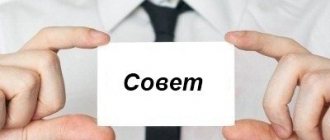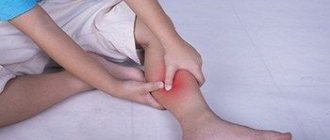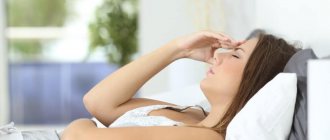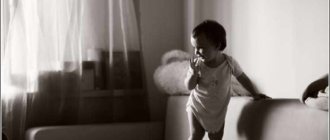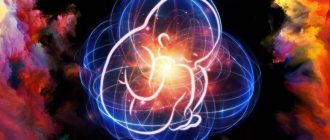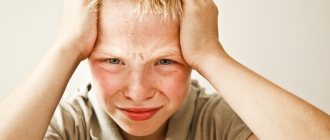To make an appointment with a doctor
Calling a pediatrician to your home
Our doctors
Our prices
March 12, 2021
Each of us, more than once in our lives, has experienced the sensation of imaginary rotation of space around ourselves or ourselves in space, that is, we have experienced dizziness. It is not a separate disease, but can be a sign of a number of quite serious diagnoses. Medical statistics claim that in terms of prevalence, this symptom ranks second in neurology after headache.
Dizziness can be systemic, when the sensation of rotating space seems very realistic and intense, and non-systemic, when there is a feeling of uncertainty, unsteadiness, loss of balance during movement, fear of loss of consciousness.
The main cause of dizziness is a failure in the coordinated functioning of the visual, proprioceptive systems and vestibular apparatus. It can be caused by various factors. Both adults and children suffer from dizziness, and they occur much more often than is commonly believed. Diagnosing dizziness due to the subjective nature of the sensations is not easy. This is even more difficult to do with children, because it is difficult for them to explain what is happening to them. And a very young child is not able to complain of dizziness at all. But it is extremely important for parents to notice this phenomenon in time in order to exclude a serious illness.
How can you tell if your child is dizzy?
You can assume that a small child is dizzy based on his behavior:
- suddenly he is distracted from his favorite activity, he looks confused and incomprehensible, he tries to focus his gaze on some point, but he fails;
- closes eyes and/or lies face down; intuitively presses against the wall, headboard, chair, trying to stay on his feet, afraid to make a movement;
- does not want to get out of bed, especially after illness;
- Sometimes nystagmus is observed - rapid movement of the eyeballs, which is involuntary.
Therapy
Some types of viral asthenic syndrome present a complex medical problem and require professional medical care. However, there are things you can do yourself.
Be your child's advocate
Take an active part in your child's life and reward him for any success.
Talk to your doctor about problems if they persist.
Talk to your teachers about the illness and the problems you are facing at school.
Develop a plan of action with your teacher that will help your child succeed.
Inform other people involved in your child's life. When people know more about the disease, they can better help and accommodate your child. This is especially important at school.
Causes of dizziness in children
Dizziness in children can be one of the symptoms of an incipient illness. However, it is also caused by reasons not related to the painful condition. Among them:
- staying in a stuffy room, lack of oxygen;
- excitement and stress, hormonal processes in adolescence;
- high ambient temperature;
- motion sickness in transport;
- feeling of hunger, decreased blood pressure.
Isolated cases, after which the child quickly returns to normal, do not require a visit to the doctor. But frequent dizziness in a child for no apparent reason may indicate serious health problems. Among them:
- neuroses and other mental pathologies;
- lesions of the central nervous system, epilepsy and other neurotic diseases;
- various inflammatory processes;
- disturbances in the activity of the vestibular apparatus;
- infectious diseases;
- migraine;
- decreased hemoglobin level, anemia;
- diseases of the inner and middle ear;
- head injuries, concussion;
- brain tumors;
- helminthiasis, poisoning, allergies.
It is very important to determine in time why a child is experiencing dizziness in order to prevent the progression of serious illnesses.
Causes of fever, nausea and vomiting
Modern pediatrics indicates in many sources two reasons for the appearance of vomiting at a temperature of 37 degrees Celsius and above:
- the body gets rid of toxic substances;
- damage to the body by pathogenic bacteria, which leads to its destabilization.
These reasons are interconnected. Nausea makes itself felt against the background of a general painful condition. Only a qualified doctor can determine the exact cause of the problems after a thorough diagnosis.
Types of dizziness
Depending on the duration and frequency of occurrence, such unpleasant conditions in children are:
- one-time, acute;
- regular (periodic);
- permanent.
Sometimes they are accompanied by migraines.
In addition, dizziness of various natures is distinguished:
- psychogenic (occur under strong emotional stress, fatigue, neuroses and mental pathologies);
- associated with brain pathologies (brain tumors, head injuries, cervical spine injuries, concussions and disorders of the blood supply to the brain, autonomic disorders, intoxication with chemicals or drugs);
- ocular in nature (noted in completely healthy children due to visual stimulation, when they have to look at fast moving objects, as well as in pathologies of the eye muscles, when the projection of objects onto the retina is disrupted);
- associated with ear diseases (due to malfunctions of the vestibular apparatus, damage to the nerves and blood vessels of the ear; inflammatory processes).
Features of the disorder
Psychogenic vomiting is considered such if it is accompanied by symptoms indicating a mental disorder. If you do not seek timely treatment, you may:
- dehydration of the body;
- a sharp jump in intracranial pressure, rupture of capillaries in the brain - stroke;
- the prerequisite for gastroesophageal reflux is the entry of gastric juice into the oral cavity with subsequent entry into the nasopharynx (ENT diseases, dysbacteriosis of the oral cavity);
- imbalance of acidity in the gastrointestinal tract - corrosion of the gastrointestinal mucosa (ulcers, gastritis, diarrhea), stagnation of feces, stretching of the walls of the large intestine with subsequent perforation;
- stretching of the walls of the stomach (pain, inflammation and suppuration in the gastrointestinal tract, development of infectious diseases).
Sudden vomiting due to poisoning should be distinguished from psychogenic: there are no spasms, no uterine sounds, the amount of vomit is significant, food is completely or partially digested, vomiting has a characteristic odor of bile. Treating poisoning with detox medications brings relief.
With psychogenic vomiting, the child does not try to prevent the vomiting process. Vomiting often becomes an integral part of life, a way of attracting attention. If for any reason there is no vomiting, the child experiences discomfort. Definitely, the problem falls within the competence of the psychiatrist and psychotherapist.
Kinetosis
Many children and some adults get motion sickness in transport. This phenomenon is called kinetosis and occurs due to irritation of the receptors of the organs of balance and vision due to acceleration of movement or change in body position. The phenomenon can occur due to strong and prolonged swinging on a swing or being on a merry-go-round, during an airplane takeoff, or in a car while accelerating. Its mechanism is not yet fully understood.
The degree of manifestation of kinetosis varies: from weakness, mild nausea and loss of balance to tinnitus, drooling, vomiting, diarrhea, cold sweat, rapid heartbeat, fainting and severe dizziness. Healthy children quickly recover after eliminating the irritant, but if the cardiovascular system is disrupted, chronic diseases can worsen.
Methods for preventing kinetosis:
- do not overload your stomach with food before the trip;
- on the road, consume candies and drinks with a sour taste (preferably water acidified with lemon);
- use special pharmaceutical products for motion sickness;
- in land transport, choose seats closer to the driver, on a ship or on an airplane - in the middle of the cabin;
- while moving, it is better not to look at sharply changing and swaying objects, and also to read, it is better to direct your gaze into the distance;
- the symptoms of kinetosis disappear during sleep, so it is better when the child sleeps on the road.
When should you see a doctor?
You should immediately make an appointment with a doctor in cases where dizziness in a child is accompanied by the following symptoms:
- severe headache and cramps;
- sudden deterioration of vision and hearing;
- short-term loss of consciousness;
- rapid movements of the eyeballs (nystagmus);
- tinnitus;
- insomnia.
You cannot do without professional help for headaches and dizziness that occur after head injuries. In this case, the child needs to be put to bed and external stimuli (bright lights, loud music) removed.
Dear patients!
Headache is a reflex mechanism that performs a protective, protective function, consisting of brain structures that perceive painful stimuli and structures that analyze these stimuli.
That headaches in children are a very common phenomenon and firmly rank second among painful conditions after abdominal pain. They affect children’s mood, behavior, performance, learning and further professional guidance. Complaints about headaches in children appear at the age of 4-5 years; it is by this age that the child learns to differentiate, localize and correctly describe his pain sensations. However, this does not mean that younger children do not experience headaches. At the age of up to 3 years, pain can be indirectly judged by the child’s behavior (increased excitability, unreasonable crying, sleep disturbance, hyperactivity, and so on).
There were 2 peaks in the increase in the frequency of headaches after 3 years of life in children:
1. In children at 7 years old (it is associated with first class stress);
2. Adolescent at 13-15 years old (puberty).
Timely diagnosis and treatment of episodic headaches in early childhood prevents its development into a chronic form in adolescents and adults.
In our country, episodic headaches are one of the most common complaints among schoolchildren and adolescents. Among children 3-5 years old, the prevalence of headaches is about 3%, among children 6 years old it is already 15%, and among schoolchildren it is up to 72% and they are associated with increased mental stress. Moreover, 90% of all types of headaches are tension headaches (TTH), a collective concept.
Etiology and provoking factors. Two etiological reasons can be distinguished:
1.Organic (craniocerebral and spinal injuries, meningitis, epilepsy, cancer, ophthalmological or ENT pathology).
2. Functional (birth injury of the cervical spine, vegetative-vascular dystonia, etc.).
Provoking factors include:
1. psychosocial (lessons in a stuffy room, physical and mental stress, relationships in the family and school, prolonged sports overload without changing direction, prolonged viewing of TV).
2. prolonged muscle tension in anti-physiological positions (uncomfortable desk; desk that does not correspond to height; uncomfortable position during sleep).
3. meteorological conditions (weather change, strong wind).
4. excessive or prolonged use of analgesics (painful menstruation in girls).
5.uncorrected visual impairment (myopia, etc.).
6. errors in organizing the daily routine (no or insufficiently long and restful daytime sleep, forced fasting).
Tension headache clinic, because it is the most common and includes the most common causes and mechanisms of occurrence (muscular, vascular and spinal pathology). Depending on the leading mechanism, one or another complaint will prevail.
Tension headaches are often diffuse in nature . The nature of the pain is aching, pressing, squeezing, and most often occurs in the afternoon. It is provoked by overwork at school, stress and meteorological factors. The pain lasts from one to several hours, often goes away on its own when changing activities, after rest, or a short sleep. Sometimes, headache attacks are accompanied by darkening of the eyes or one-time vomiting. TTH is more often localized in the frontal and frontotemporal regions, less often in the parietal regions (children indicate the place of pain with their palm). Most children with tension-type headache have various manifestations of the pathology of the autonomic nervous system: sweaty palms, palpitations, stabbing pain in the heart, abdominal pain. Features of HDN in spinal pathology. The child complains of shooting headaches in the cervical-occipital region. It intensifies with awkward rapid movements of the head and neck, coughing and sneezing. Patients try to keep their head in a fixed position. There is no effect from the use of painkillers, but physiotherapy and massage of the collar area give good results.
Features of muscle tension
1. Children complain of a squeezing, aching headache throughout the day.
2. Occurs in children during prolonged emotional stress, less often after physical activity.
3. Dependence on the position of the head and neck during lessons (in school-age children), sometimes worsens after sleep and a long fixed position of the head.
4. Muscle tension headache is characterized by constancy and monotony, and is localized in the frontotemporal or occipito-cervical regions. It is caused by prolonged tension of the muscles of the soft integument of the head and vascular spasm.
5. Persistent headaches due to muscle tension also occur after a head injury and are combined with increased irritability and fatigue.
Features of tension-type headache associated with spasm of the vertebral artery.
Pain in the cervical-occipital region can be caused by pressure from the vertebrae or muscles on the vertebral artery. The pain has different characteristics - from shooting to throbbing. Often the pain radiates to half the head, accompanied by dizziness, tinnitus, “simple” visual disturbances, fainting, etc. The most severe form of dyscirculatory disorders may be acute cerebrovascular accident - pre-stroke conditions.
Features of tension-type headache associated with vegetative-vascular dystonia (VSD)
In some cases, autonomic disorders are predominantly sympathetic or parasympathetic in nature. When sympathetic reactions predominate, pale and dry skin, dilated pupils, and sometimes “bulging” eyes are noted.
The extremities are cold, the body temperature is unstable. Reduced tolerance to heat, stuffiness, noise, bright light, coffee. Muscle tremors, palpitations, and constipation may occur. Body weight is often reduced with a good appetite. Sleep is disturbed. Physical activity is increased, performance is better in the evening. The ability to remember and concentrate is reduced.
The predominance of parasympathetic reactions is characterized by a feeling of hot flashes and redness of the skin; increased humidity of the palms and feet, poor tolerance to cold. Dizziness, a feeling of “incompleteness of inspiration,” nausea, periodic pain in the upper abdomen, increased gas formation, and diarrhea may be observed. Children tend to gain weight (often with decreased appetite), are apathetic, have little initiative, and are fearful. Increased sleepiness, slower transition to active wakefulness in the morning. Sometimes fainting occurs, allergic reactions are often observed in children. Children have reduced tolerance to mental and physical stress, against the background of which an attack occurs.
Diagnostics:
1. Ultrasound of the vessels of the neck and head (duplexography) - spasm of the artery supplying the brain is determined. This spasm is caused by pathology of the vertebral arteries (developmental anomaly, impact on the artery by the vertebrae or muscles).
2. X-ray of the cervical spine - instability of the cervical spine and/or signs of osteochondrosis are determined.
3. Nuclear magnetic resonance imaging - performed if a herniated disc is suspected (extremely rare in pediatric practice) or if there is no pathology in the conclusion of ultrasound and radiography.
4.If necessary, an examination of the fundus and visual acuity is carried out.
Treatment and prevention. Treatment of tension-type headache.
1. Treatment of episodic tension-type headaches - implies preventive measures: daily routine, proper sleep, comfortable working conditions. Non-pharmacological treatment methods - massage of the head and collar area, physical therapy, acupuncture, manual therapy, hydrogen sulfide or sea baths, physiotherapy, psychotherapy (with the aim of increasing social adaptation). For headaches, you can recommend a single dose of analgesics - paracetamol, etc.
2. Treatment of chronic tension headaches - eleutherococcus, lemongrass (add to tea in the morning). In general, tea with lemon is one of the means of raising the tone of a child’s life. Ascorbic acid is also useful in this case, as well as sedatives (valerian, motherwort, peony). Chronic tension headaches, in addition to the standard set of procedures for episodic headaches, almost necessarily involve the prescription of vascular medications and, very often, anti-depressants. The course of treatment lasts at least 3-4 months.
Prevention requires a reasonable alternation of work and rest for the student, a choice of additional activities and hobbies that do not take up the time allotted for rest. The appearance of headaches in such cases indicates a state of fatigue of the nervous system. In this case, there is no need to resort to taking painkillers, but on the contrary, the entire complex of therapeutic measures should be of a general strengthening nature. Here you can use physical therapy exercises in the open air, water procedures (more details in the article “On the benefits of hydrogen sulfide baths”), which should begin with morning rubdowns; massage and physiotherapy, varied fortified diet;
in winter, it is recommended to take additional multivitamins 1-2 tablets per day.
According to statistical studies, the frequency of headaches in children (in particular tension pain) is steadily increasing.
And this is understandable; modern psychosocial conditions place increasingly higher demands on the nervous system of children. There are currently no proven and applied methods for alternating mental and physical stress in schools. Therefore, if a child complains of headaches, parents should take appropriate action. In this case, the child should be examined by a neurologist or rehabilitation specialist. If necessary, you need to undergo further examination by an ophthalmologist and an otolaryngologist.
Currently, there are many schemes, techniques, and methods for treating headaches.
Their degree of effectiveness varies. Some of them are entirely medicinal, others completely deny drug therapy and offer to solve the problem using alternative (osteopathic and physiofunctional) methods.
Various methods are used for prevention: (physiotherapeutic, reflexology, manual, osteopathic, medicinal) there are a lot of techniques and treatment methods.
You need to consult a doctor in time and give your child an accurate diagnosis.
A healthy child is yours – peace of mind, joy in the family.
Which specialist should I contact if my child has dizziness?
In all of the above cases, you should visit a pediatrician. We recommend making an appointment with one of the specialists in the pediatric department of JSC “Medicine” (clinic of Academician Roitberg) by telephone 24 hours a day or calling a doctor at home. JSC "Medicine" (academician Roitberg's clinic) is conveniently located in the center of Moscow at 2nd Tverskoy-Yamsky Lane, 10. The medical institution is equipped with modern diagnostic and therapeutic equipment and provides a wide range of services in the field of pediatric medicine. Many problems associated with dizziness are resolved by visiting a pediatrician; sometimes consultation with specialized specialists is required.
If a child experiences short-term loss of consciousness, after an attack of dizziness he does not orient himself in space and time, loses balance and falls with his eyes closed, cannot pick up an object, misses when asked to touch the tip of his nose with a finger, the pediatrician recommends visiting a neurologist. And if you feel dizzy due to tinnitus and impaired coordination of movements, you need the help of an otolaryngologist. Sometimes a consultation with a child psychologist may be required.
Diagnostics
At the appointment, the pediatrician should find out the frequency and duration of dizziness attacks, identify provoking factors, connections with changes in body position, as well as taking medications or exposure to chemicals. It is also important to find out if family members have diseases such as migraines, seizures, pathologies of the endocrine system and kidneys, movement disorders, aura syndromes and ataxia, which may be hereditary. After clarifying the details to clarify the preliminary diagnosis, the doctor sends the small patient for laboratory and (or) instrumental research.
At JSC "Medicine" (academician Roitberg's clinic) they quickly and thoroughly perform various blood tests, ultrasound, x-rays, electrocardiograms and magnetic resonance imaging. You can invite a specialist to your home to collect material for analysis.
Treatment
Treatment of dizziness in children consists of treating the underlying disease that caused this condition. Often medications are prescribed aimed at strengthening the autonomic nervous system: vitamins, drugs that improve blood supply to the brain and dilate blood vessels. Patients are recommended physical therapy and therapeutic exercises to train the vestibular apparatus. At JSC “Medicine” (academician Roitberg’s clinic), specialists conduct physical therapy classes with children. A properly selected set of exercises can solve many health problems at once. Physiotherapeutic treatment is also carried out using modern professional equipment.


